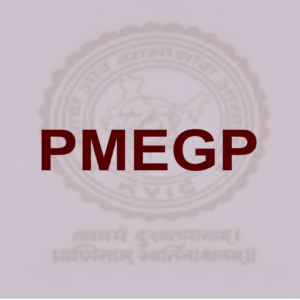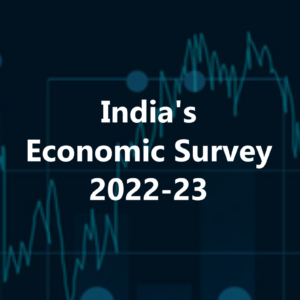Micro, Small, and Medium Enterprises (MSMEs) are the backbone of India’s economy, contributing significantly to employment and GDP. However, accessing finance remains a formidable challenge for many MSMEs. This article delves into the available avenues, regulatory framework, issues faced, government interventions, and potential solutions for enhancing financial inclusion for MSMEs in India.
Available Avenues:
1. Traditional Banking:
Traditional banks serve as foundational pillars for MSME financing in India, offering a variety of loan products tailored to meet the diverse needs of small and medium enterprises. These banks play a crucial role in implementing government-sponsored schemes such as MUDRA Yojana and CGTMSE, acting as disbursing agents to provide funds to MSMEs. While traditional banking provides established relationships and a range of financial solutions, challenges such as stringent collateral requirements, time-consuming approval processes, and higher interest rates persist, especially for smaller enterprises.
2. Non-Banking Financial Companies (NBFCs):
Non-Banking Financial Companies (NBFCs) have emerged as alternative financial institutions catering to the unique financing needs of MSMEs in India. Unlike traditional banks, NBFCs often provide more flexible lending solutions, including quick and streamlined loan approvals, making them an attractive option for smaller enterprises. While interest rates may be comparatively higher, NBFCs offer accessibility to credit for MSMEs that might face challenges in meeting stringent collateral requirements. These institutions play a vital role in fostering financial inclusion by reaching out to a broader spectrum of businesses, contributing to the resilience and growth of the MSME sector. The agility of NBFCs in adapting to the specific needs of MSMEs, combined with their innovative financing models, makes them an essential component of the diverse financial landscape supporting small and medium enterprises.
3. Government Schemes:
The Indian government has implemented several crucial schemes to bolster the growth of Micro, Small, and Medium Enterprises (MSMEs). Notably, the Pradhan Mantri Mudra Yojana (MUDRA) facilitates financial assistance through various categories, while the Credit Guarantee Fund Trust for Micro and Small Enterprises (CGTMSE) provides credit guarantees, easing collateral constraints. Additionally, initiatives like the Credit Linked Capital Subsidy Scheme (CLCSS) and SIDBI Make in India Soft Loan Fund for MSMEs (SMILE) focus on technology upgradation and innovation. These schemes play a pivotal role in promoting entrepreneurship and financial inclusion, offering collateral-free loans, interest subsidies, and specialized support to nurture the MSME sector, contributing significantly to India’s economic development.
4. Venture Capital and Private Equity:
Venture capital (VC) and private equity (PE) serve as alternative sources of funding, particularly beneficial for innovative and high-growth potential MSMEs in India. These forms of financing involve investment from external entities in exchange for equity, providing a different avenue compared to traditional debt-based funding. Venture capitalists typically support startups and early-stage enterprises, injecting capital to fuel innovation, product development, and market expansion. Private equity, on the other hand, is often sought by more established MSMEs looking for growth capital or strategic support. While VC and PE investments can bring significant financial resources and expertise, they also entail relinquishing a share of ownership. The involvement of venture capital and private equity in the MSME sector underscores their role in fostering entrepreneurship, driving innovation, and contributing to the overall dynamism of India’s small and medium enterprise landscape.
Issues Faced by MSMEs:
- Stringent Collateral Requirements: Many traditional banks impose stringent collateral requirements, making it challenging for smaller MSMEs with limited assets to secure loans.
- High-Interest Rates: MSMEs often face relatively high-interest rates, impacting their profitability and financial viability.
- Limited Credit History: Lack of a well-established credit history for many MSMEs poses challenges when seeking loans, as financial institutions rely on creditworthiness assessments.
- Complex Loan Application Processes: Cumbersome and time-consuming loan application processes in traditional banks can discourage MSMEs from pursuing financial support.
- Information Asymmetry: MSMEs may lack comprehensive financial documentation or credit histories, leading to information asymmetry that affects the evaluation process.
- Risk-Averse Lending Practices: Some financial institutions exhibit risk-averse lending practices, making it difficult for innovative or newer MSMEs to access funding.
- Limited Access to Formal Financial Channels: The cumulative effect of these challenges results in limited access to formal financial channels, hindering the overall development and expansion of the MSME sector.
- Delayed Payments by Buyers: MSMEs suffer due to delay of payments by buyers for goods supplied/ services provided which adds to their cash flow crunch thereby requiring MSMESs to seek credit from Banks and NBFCs adding to their cost of funds.
Existing Government Interventions for MSMEs in India:
- MUDRA Yojana: The Pradhan Mantri Mudra Yojana provides financial assistance to MSMEs through various schemes, such as Shishu, Kishor, and Tarun, catering to enterprises at different stages of growth.
- Credit Linked Capital Subsidy Scheme (CLCSS): CLCSS aims to facilitate technology upgradation by providing a subsidy on the capital investment made by MSMEs in specified machinery and equipment.
- Credit Guarantee Fund Trust for Micro and Small Enterprises (CGTMSE): CGTMSE offers credit guarantees to financial institutions, encouraging them to provide collateral-free loans to MSMEs, thereby mitigating the risk for lenders.
- Interest Subvention Scheme for MSMEs: The government provides interest subvention to MSMEs, reducing the effective interest rate on loans and promoting affordable credit access.
- SIDBI Make in India Soft Loan Fund for MSMEs (SMILE): SIDBI manages the SMILE program, providing soft loans to MSMEs for promoting the “Make in India” initiative, fostering innovation and competitiveness.
- National Small Industries Corporation (NSIC) Schemes: NSIC offers various schemes to support MSMEs, including raw material assistance, marketing support, and credit facilitation through tie-ups with financial institutions.
- Stand-Up India: Aimed at promoting entrepreneurship among women and Scheduled Castes (SCs)/Scheduled Tribes (STs), Stand-Up India provides bank loans ranging from Rs. 10 lakh to Rs. 1 crore for setting up greenfield enterprises.
- Prime Minister’s Employment Generation Programme (PMEGP): PMEGP facilitates self-employment opportunities by providing financial assistance for setting up micro-enterprises in the non-farm sector.
- Cluster Development Program: The Ministry of MSMEs supports the Cluster Development Program, which focuses on enhancing the competitiveness of MSMEs by promoting cluster-based development and networking.
- Export Credit Insurance: The Export Credit Guarantee Corporation (ECGC) provides credit insurance to MSMEs, safeguarding them against non-payment and facilitating export transactions.
- Udyog Aadhaar Registration: The Udyog Aadhaar registration process simplifies the registration of MSMEs, making it easier for them to avail benefits under various government schemes and programs.
- Priority Sector Lending (PSL) for MSMEs:
- The Reserve Bank of India mandates that a certain percentage of total lending by banks be allocated to priority sectors, including MSMEs. This ensures that a portion of the financial resources of banks is directed towards supporting the growth and development of the MSME sector.
- PSL guidelines require banks to allocate a specific percentage of their lending portfolio to MSMEs, recognizing the critical role these enterprises play in fostering economic development and employment generation.
- This priority lending helps MSMEs access credit on favorable terms, including lower interest rates and relaxed collateral requirements, thereby promoting financial inclusion and sustainability within the MSME ecosystem.
- By designating MSMEs as a priority sector, the government aims to ensure that these enterprises receive the necessary financial support to thrive, contributing significantly to economic progress and inclusive growth.
Addressing the Issues: Suggestions for mitigating the issues faced by MSMEs
- Specialized MSME Banks: Establish specialized banks catering exclusively to MSMEs, providing tailored financial products and services to meet their unique requirements.
- Trade Credit Insurance: Introduce trade credit insurance schemes to protect MSMEs from the risk of non-payment by buyers, encouraging them to engage in domestic and international trade.
- Tax Incentives: Offer tax incentives for financial institutions providing loans to MSMEs, creating a more favorable lending environment and reducing the cost of capital.
- E-Governance Initiatives: Expand e-governance initiatives to digitize and streamline regulatory compliance processes for MSMEs, reducing the administrative burden and time involved.
- Dedicated Regulatory Bodies: Establish dedicated regulatory bodies focused on overseeing and promoting MSME financing, ensuring effective implementation of policies and addressing sector-specific challenges.
- Skill Development Initiatives: Invest in skill development initiatives to enhance the managerial and technical capabilities of MSME entrepreneurs, making them better equipped to manage finances and business operations effectively.
- Credit Rating Agencies for MSMEs: Establish specialized credit rating agencies focusing on the unique aspects of MSMEs, providing accurate assessments of their creditworthiness and reducing information asymmetry.
- Flexible Collateral Norms: Implement policies that allow for more flexible collateral norms, including movable assets, intellectual property, and receivables, making it easier for MSMEs to secure loans.
- Microfinance Institutions (MFIs): Promote and regulate Microfinance Institutions to cater specifically to the micro-enterprises, ensuring financial inclusion at the grassroots level.
- Digital Payment Adoption: Encourage the adoption of digital payment systems within MSMEs, reducing reliance on cash transactions and improving transparency in financial dealings.
- Credit Counselling Centers: Establish credit counselling centers to provide guidance and support to MSMEs in managing their finances, understanding credit terms, and navigating financial challenges.
- Monitoring and Evaluation Mechanisms: Implement robust monitoring and evaluation mechanisms to assess the impact of government interventions, ensuring continuous improvement and adaptability to changing economic landscapes.
By incorporating these comprehensive measures, the government can create an enabling environment for MSMEs, promoting their financial stability, growth, and overall contribution to the Indian economy.
In conclusion,Ensuring robust financial support for MSMEs is crucial for fostering economic growth and employment generation in India. By addressing the challenges faced by MSMEs through a combination of regulatory reforms, government interventions, and industry collaboration, India can unleash the full potential of its vibrant and dynamic small business sector.
Image credit: Image by rawpixel.com on Freepik


